
For car campers, backpackers and walkers that are looking to prioritise a comfortable night's sleep whilst 3-season camping, the Therm-a-Rest Questar sleeping bag pairs well with the new Trail Pro self-inflating mat. We've used this mat and sleeping bag combination on a range of trips, from campsite camping to cool hill overnights. While it may not be the most compact option for weight-conscious campers (particularly the sleeping mat) it offers versatility, warmth and comfort.
Questar -6C Sleeping Bag - £295
In Use
The Questar sleeping bags are designed for backpackers and walkers who value comfort over obsessing about weight. These bags are ideal when light-ish and packable gear is a nice bonus, but a warm and comfortable night's sleep takes priority. At a fair price for good build quality, your bank account will also feel that added benefit compared to other models that rack up the pounds with more expensive down fill.
The Questar -6C is marketed as a 3-season bag, handling cold spring and autumn nights in the UK well. However, the -6C rating refers to the bag's limit, not its comfort temperature, which is 0C. To reach the -6C limit, extra warm clothing is needed. For more information on sleeping bag temperature ratings, see the article below:
Perceived warmth in any bag is influenced by personal factors, conditions, and gear, with a high-quality sleeping mat being key to insulation from the ground. I've used the Questar -6C down to -5C with thick layers and felt comfortable. In the UK, this temperature rating offers great flexibility for backpacking, especially when you're already carrying extra layers. It provides more versatility than a warmer model, which could be overkill for most 3-season conditions. On warmer nights, it keeps you cozy without the need for extra layers.
The bag's wide design adds comfort, particularly for side sleepers who'll appreciate the extra room to move. I've found it comfortable to raise my legs while on my side. However, the wide shape can cause heat loss to the ground when paired with a narrower sleeping mat, compared to a snugger 'mummy' bag. Additionally, if you move around at night, the extra air space requires more energy to heat, and heat escapes more easily.
Materials and Construction
The Questar features 650 fill power Nikwax Hydrophobic Down (0.54kg fill weight), which offers good loft and insulation while reducing moisture absorption - good for humid UK camping. While 650 fill power isn't the highest available, it still offers great quality. For a sleeping bag I use regularly and don't want to stress over, I appreciate not having to worry as much about cold spots, which can be an issue with ultra-high loft down migrating.
The outer is made of 20 denier polyester, balancing weight and durability while still allowing the down to fully loft. This lofting is enhanced by a box-baffled construction with mesh walls, which helps reduce cold spots and minimise heat loss. Insulation is zoned, with more on top to prevent heat loss and less underneath due to compression. The DWR finish has performed well in heavy dew, though, like all similar treatments, it may need reapplication over time. The inner is 20 denier polyester taffeta, which provides a silky, non-clammy feel.
Weight and Pack Size
The regular size weighs 1kg on the scales, plus another 100g for the stuff sack. While not the lightest for its temperature rating, it strikes a good balance between price and comfort, making it a top choice if going fast and light aren't your top priorities.
Packed in the stuff sack, the Questar is about the size of a small watermelon (~19cm diameter x ~23cm height). The stuff sack has four pull tabs for easy compression, and a storage sack is included to maintain loft between trips.
Features
I've used a few Therm-a-Rest bags before and always liked the SynergyLink Connectors, which loop round your sleep mat and keep the bag secured in place. Although they work well with standard-width pads, it feels tight on a wide pad, which is something to keep in mind.
The foot warmer pocket—a small baffled section at the footbox that traps heat quickly—is a nice touch when your feet are cold after something like a loch swim. It's useful, but for me not a standout feature compared to other bags on the market.

The Quilt and Blanket Loops add versatility if you need extra insulation on a cold night, though I haven't needed them yet.
A draft collar, full-length zipper draft tube, and cinchable hood all work well for added warmth retention. The snag-free zipper is good too, and especially handy in the dark.
There's also an external pocket for small items like a headlamp or phone, though I'd prefer an internal one to help keep batteries warm.
Trial Pro Self Inflating Sleeping Mat - £135
In Use
Much like the Questar, the Trail Pro is designed for three-season (edging into four-season) car campers, backpackers and walkers who prioritise comfort over cutting every gram. While weight is still a consideration, warmth and a good night's sleep take precedence. The Regular Wide model I've been using does take up more space in a pack, but it's still manageable for backpacking. With its durable 50-denier polyester exterior it feels well-made and built to last - something we've come to expect from Therm-a-Rest. At £135, it offers a fair price for the warmth and comfort it provides.
At 7.6cm thick, the Trail Pro does a great job of smoothing out uneven ground, providing a cushioned and supportive sleep. The wider design adds noticeable comfort, particularly for side sleepers who'll appreciate the extra space to move. It also pairs well with the Questar's broader cut, helping to prevent the sleeping bag from draping over the edges. However, as mentioned earlier, there are some compatibility issues when trying to use it with Synergy Link connectors.
Warmth
With an R-value of 4.4, the Trail Pro provides impressive warmth. Having previously used a similar older Therm-a-Rest self-inflating model (the ProLite Apex, R-3.8), I appreciate the extra boost in insulation, which makes a real difference on colder spring nights. I'd still trust this mat for milder winter overnights, but for regular use in a Scottish winter, I'd prefer something that sits more firmly in the four-season category.
Weight and Packability
Neither weight nor packability are groundbreaking here—this is where you see the main trade-off for comfort and ease of use. On my home scales, the mat comes in at just over 1kg, which is reasonable but by no means light by the standards of backpacking mats. The pack size in the Regular Wide version (33 x 23 cm) is less impressive, though this was a conscious choice since I'm primarily using it for car camping. If backpacking is your main focus, the more compact Regular model might be a better option.
Inflation and Valve
I'm a big fan of Therm-a-Rest's WingLock valve design. It's well-sized for easy one-handed use, simple and intuitive, and neatly positioned on the side of the mat for easy access—even in the dark. Adjusting the firmness is effortless, whether during setup or in the middle of the night. Valve design gets a big thumbs up.
When stored correctly - left uncompressed so the foam can expand and retain its 'memory' - inflation is a breeze. After about 10 minutes of self-inflation, I only need a couple of extra puffs using the stuff sack to reach my preferred firmness.
Eco Credentials
The down fill in the Questar is RDS certified. We could not find any other information on recycled content of either product.
Verdict
The Therm-a-Rest Trail Pro sleeping mat, paired with the Questar sleeping bag, creates a comfortable and reliable setup for three-season campers, backpackers, and car campers. While it may not be the lightest or most compact option, the extra warmth and comfort make it ideal for those prioritising a good night's sleep. Its solid build quality and well-thought-out design make it a great option for anyone wanting more comfort than ultralight alternatives. Overall, this combination is perfect for those who want warmth and comfort without the need to compromise on sleep quality - and all for a fair price.
























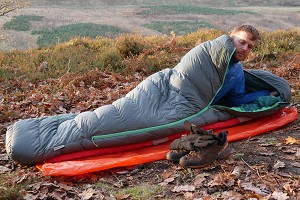
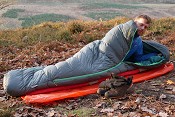


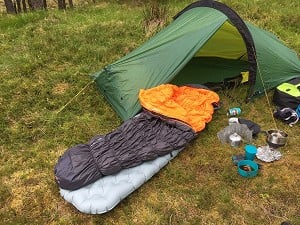
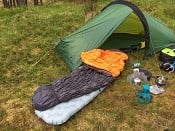
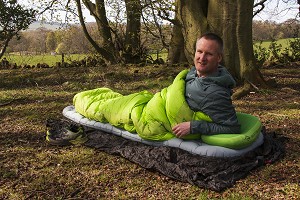


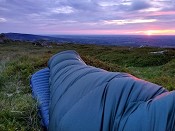
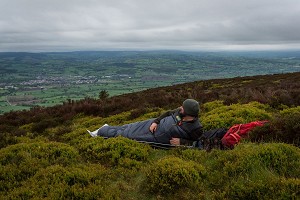


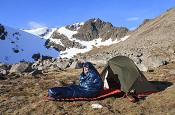




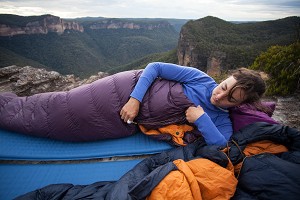
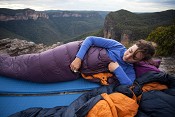
Comments